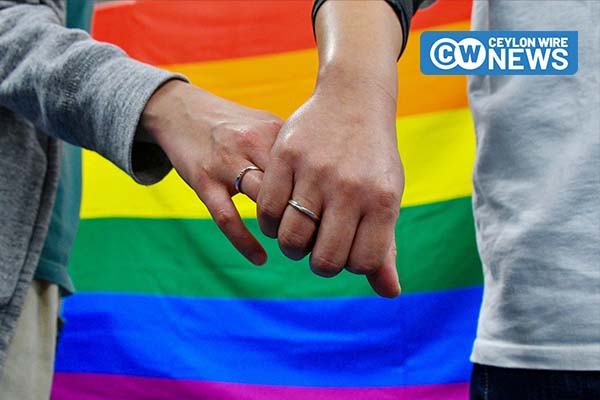Introduction
Queer theory, an intellectual movement that emerged in the 1990s, initially sparked controversy and raised eyebrows. Yet, over the years, it has been embraced and reclaimed by many, serving as a unifying force for people with non-normative genders, sexual practices, and identities. In academia, the term extends its influence beyond traditional boundaries, challenging prevailing modes of thought.
Renowned scholar Eve Sedgwick aptly describes “queer” as “the open mesh of possibilities, gaps, overlaps, dissonances, and resonances, lapses, and excesses of meaning when the constituent elements of anyone’s gender or sexuality refuse to conform to a monolithic definition.”
In this illuminating context, this article embarks on an exploration of the legal status of same-sex marriages in South Asia while shedding light on the conditions and rights of the LGBTQ+ community in each country within this dynamic region.
Legal overview of South Asia
In a momentous decision, the Supreme Court of India, with a five-judge bench, acknowledged the discrimination and hardships endured by the LGBTQ community in the country. However, it chose not to establish a law pertaining to same-sex marriage, contending that this matter was beyond the scope of its legal jurisdiction. This ruling, described by many as a “heartbreaking setback,” resonated profoundly within the LGBTQIA+ community, especially considering that, in 2018, the same court had decriminalized homosexuality by striking down the provisions of Article 377. This landmark judgment also recognized the legal existence of the third gender.
Unsurprisingly, the recent verdict has evoked a multitude of emotions and reactions across the LGBTQ+ community. Some view it as an obstacle in their ongoing struggle for marriage equality, while others perceive it as a stepping stone, an initial milestone that may eventually lead to broader opportunities for their cause.
In Pakistan, same-sex relations remain illegal, with the severity of this prohibition extending to the imposition of the death penalty under Sharia law. The prevailing legal framework, along with public discourse, often characterizes same-sex relationships as ‘immoral’ and ‘un-Islamic,’ contributing to a hostile environment for the LGBTQ+ community.
Remarkably, the situation for transgender individuals, referred to as Khawaja sera, has seen notable improvements. The passage of the Transgender Person (Protection of Rights) Act in 2018 marked a positive turning point. This legislation has offered increased legal protection for transgender rights. Nonetheless, social exclusion and discrimination persist as significant challenges for the LGBTQ+ community in Pakistan. The deeply ingrained emphasis on traditional family structures and conservative religious values in the country continues to shape the landscape for LGBTQ+ individuals, underscoring the complexity of their struggle for equal rights.
The case of Bhutan is similar to those of other countries in the region, where homosexuality in 2021 was decriminalized. In 2022, Tashi Choden Chambal, an openly lesbian woman, was crowned the title of Miss Bhutan. However, this does not suggest anything about the condition of the community in Bhutan, as there is little awareness about them in the country, and the legal option of same-sex marriage is still not available to the people of the country.
Same-sex relationships are criminalized in Sri Lanka, under the penal code of 1833, which, notably, encompasses transgender people within its purview. It imposes stringent punishments, including imprisonment for ten years plus a fine. Recently in 2023, there has been an attempt by the to repeal this law via a private members bill that was introduced by the SLPP Government MP and attorney Premnath Dolwatte, which garnered support from the government.
The condition of the LGBTQ community in Afghanistan, especially after the coming of the Taliban regime, has worsened even further, where people are getting attacked and abused by the members of Taliban as well as their families and neighbors, because of their sexual orientation. The condition of the community was not any better before the Taliban takeover as well since the previous regime had also criminalized same-sex marriage, and some of the leaders took a hardline stance against the people of LGBTQAI+ community.
The Penal code of 2014 in the Maldives criminalizes same-sex marriage as well as any other form of sexual activity among people of the same sex. Since the country operates under Islamic law, same-sex marriage is prohibited. There are, in fact, reports of discrimination and violence against the community because of the social stigma as well as the absence of civil society groups working for their cause. This provision carries a maximum punishment of eight years’ imprisonment and 100 lashes.
Nepal, on the other hand, is the second country in Asia that has legalized same-sex marriage. On June 28, the Supreme Court of Nepal delivered a historic judgment that cleared the way for marriage equality in the country. The LGBTQAI+ community in Nepal has also encountered a number of challenges, and it could not be seen as linear or predictable. Initially, they were derided as “social pollutants’ and “unnatural.” Their struggle needs to be seen in the context of the patriarchal legal system as well as the bloody civil war. The LGBTQ activists deserve recognition for their diverse contributions in securing legal victories. They have been instrumental in various aspects, including participating in political spheres, actively engaging in Nepali cultural festivals, collaborating with international organizations like the U.N., and making significant inroads within the legal system. It was only in 2007 when the judiciary asked the government to legally recognize a third gender. Despite all these challenges, Nepal has become an LGBT rights beacon, setting a path for other countries in the region to be inspired by.
The lesson from the aforementioned cases is that the move toward a more open, comprehensive, and accepting society, particularly in South Asia, where strong ties to cultural, religious traditions, and conventional family structures persistently endure, could only begin with spreading awareness and engaging with the society and customs as in the case of Nepal. This, nevertheless, cannot be a linear process, and the society as well as the state at large will have to reciprocate to these endeavors.
Conclusion
The legal landscape for same-sex marriage across South Asia presents a diverse and evolving picture. While some nations have taken progressive steps, others continue to criminalize same-sex relationships. Nepal stands as a beacon of hope, having legalized same-sex marriage and paving the way for marriage equality. The LGBTQAI+ community in Nepal faced multifaceted challenges, from social stigmatization to navigating a patriarchal legal system, but their activism and engagement with various spheres of society have been instrumental in bringing about legal victories.
The key takeaway from these cases is that progress toward a more inclusive and accepting society in South Asia, deeply rooted in culture, religion, and traditional family structures, must begin with awareness and engagement. However, this journey is not linear, and it requires both society and the state to reciprocate to these efforts. Each country in the region grapples with its unique cultural and legal contexts, and as seen in Nepal, change can be driven by the determined efforts of activists and communities.
The path to equal rights and acceptance is ongoing, and the experiences of these countries demonstrate that change is possible even in challenging environments. As South Asia continues to evolve, it offers valuable lessons for the rest of the world in the ongoing struggle for LGBTQ+ rights and marriage equality.
References
QUEER on JSTOR. (n.d.). www.jstor.org. https://doi.org/10.2307/23924280
“We’re here and we’re queer?”: An introduction to Studies in Queer Anthropology on JSTOR. (n.d.). www.jstor.org. https://doi.org/10.2307/24469636
Sri Lanka | Human Dignity Trust. (2023, August 29). Human Dignity Trust. https://www.humandignitytrust.org/country-profile/sri-lanka/
Afghanistan: Taliban target LGBT Afghans. (2022, January 26). Human Rights Watch. https://www.hrw.org/news/2022/01/26/afghanistan-taliban-target-lgbt-afghans
Knight, K. (2020, October 28). How did Nepal become a global LGBT rights beacon? Human Rights Watch. https://www.hrw.org/news/2017/08/11/how-did-nepal-become-global-lgbt-rights-beacon
Godbole, T. (2022, July 8). Are LGBTQ rights blossoming in Bhutan? dw.com. https://www.dw.com/en/are-lgbtq-rights-blossoming-in-bhutan/a-62394405
Ganguly, M. (2023, July 5). Nepal’s historic achievement on marriage equality. Human Rights Watch. https://www.hrw.org/news/2023/07/05/nepals-historic-achievement-marriage-equality
Jaswal, S. (2023, October 24). India’s LGBTQ community battles same-sex marriage ‘heartbreak’ from court. Al Jazeera.
Pakistan | Outright International. (n.d.). Outright International. https://outrightinternational.org/our-work/asia/pakistan
Author – Nidhi Singh
Source – https://www.ssrinitiative.org/south-asias-same-sex-marriage-landscape-an-in-depth-exploration/









